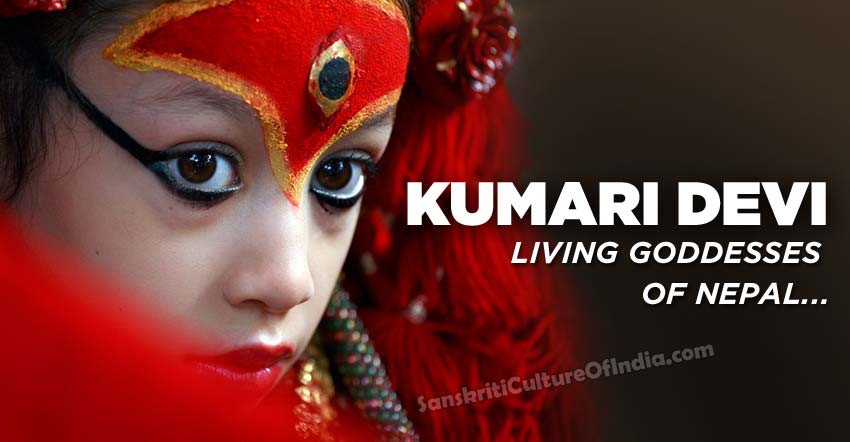The Himalayan Hindu kingdom of Nepal is not only the land of many mountain peaks, but also many gods and goddess, unique among all of them being the living, breathing goddess – Kumari Devi, a deified young girl.
The custom of worshiping a pre-pubescent girl, who is not a born goddess, as the source of supreme power is an old Hindu-Buddhist tradition that still continues to this day in Nepal.
Choosing the Living Goddess
The selection of the Kumari, who is entitled to sit on the pedestal for worship as the Living Goddess is an elaborate affair. According to the traditions of Vajrayana sect of Mahayana Buddhism, girls in the age-group of 4-7 year, who belong to the Sakya community, and have an ‘appropriate’ horoscope are screened on the basis of their 32 attributes of perfection, including color of eyes, shape of teeth and even voice quality. They are then are taken to meet the deities in a dark room, where terrifying tantrik rituals are performed. The real goddess is one who stays calm and collected throughout these trials. Other Hindu-Buddhist rituals that follow finally determine the real Kumari.
Girl Becomes Goddess
After the ceremonies, the spirit of the goddess is said to enter her body. She takes on the clothing and jewelry of her predecessor, and is given the title of Kumari Devi, who is worshipped on all religious occasions. She would now live in a place called ‘Kumari Ghar’, at Kathmandu’s Hanumandhoka palace square. It is a beautifully decorated house where the living goddess performs her daily rituals.
Goddess Turns Human
The Kumari’s godhood comes to an end with her first menstruation, because it is believed that on reaching puberty the Kumari turns human. However, if she turns out to be unlucky, even a minor cut or bleeding can render her invalid for worship, and the search for the new goddess has to begin.
The Kumari Festival
Every September, on the Indra Jatra festival, the living goddess in all her bejeweled splendor is borne in a palanquin in a religious procession through parts of the Nepalese Capital. It is a grand carnival attended by people in thousands, who come to see the living goddess and seek her blessings. In keeping with an old tradition, the Kumari also blesses the King of Nepal during this festival.
~ Subhamoy Das










